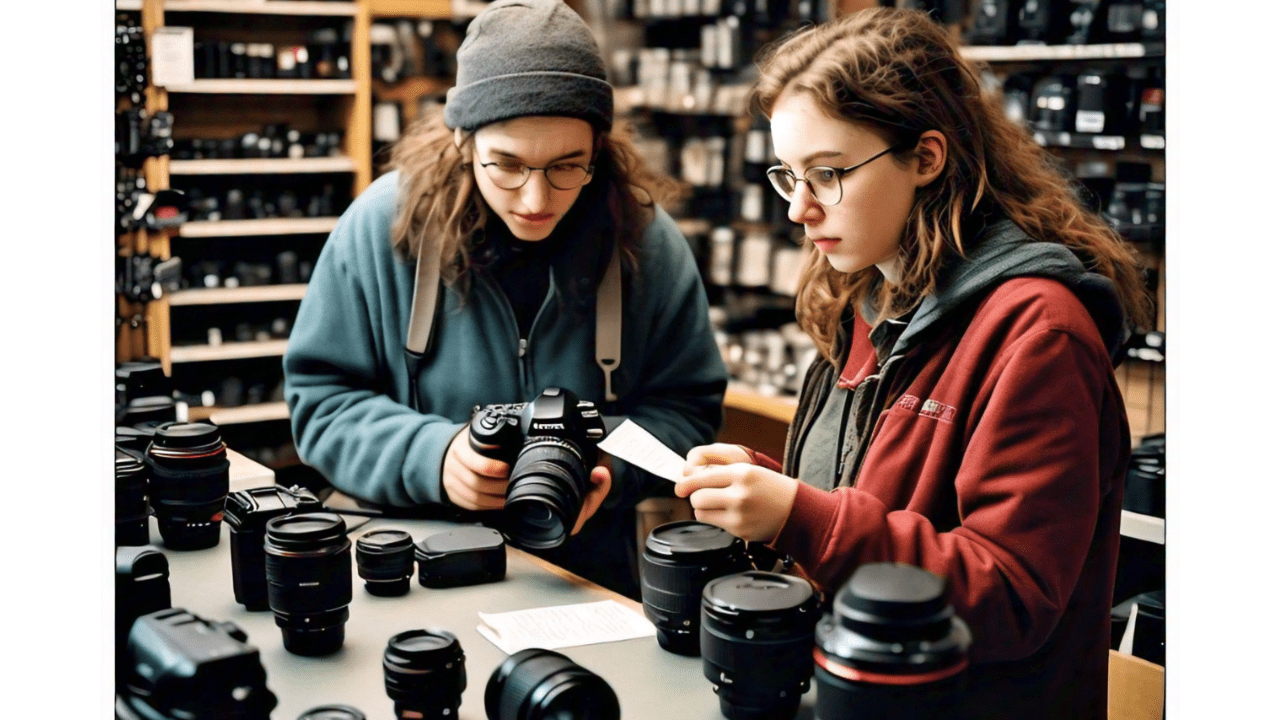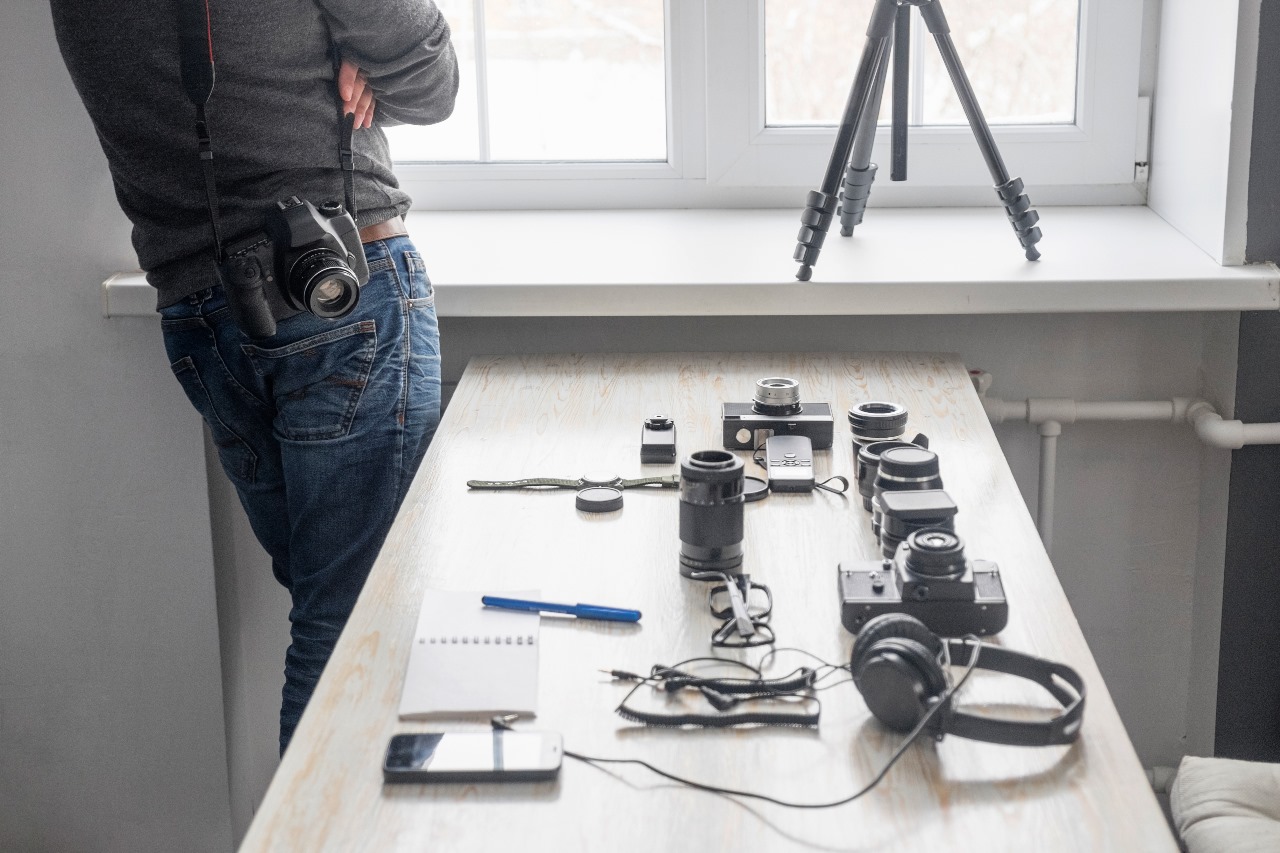This article is an extract from our “How to Start a Photography Business” course, designed to cater to casual photographers, aspiring and seasoned pros. This course is FREE for pro members! Sign up for your Pro Subscription here.
Introduction
Photography is an art that marries creativity with technology, but keeping up with the latest gear can be financially daunting. This challenge affects not only professional photographers but also hobbyists who wish to elevate their craft. The rapid evolution of technology and the allure of new equipment often lead to significant costs that can overwhelm photographers of all levels. In this guide, we’ll share strategies to keep your gear expenses manageable, ensuring your investment aligns with your unique photography needs without breaking the bank.
Investing in the Right Equipment
Building your photography kit requires careful selection of equipment that suits your niche. Avoiding unnecessary purchases is key to reducing financial pressure. For example, wedding photographers might benefit from cameras with dual memory card slots, while architectural photographers may need specialised tilt-and-shift lenses. Understanding your specific needs helps you make informed decisions about your investments. You can also read our articles on Choosing the Best Memory Card for Your Camera and Choosing the Best Computer for Photo Editing.
Striving for Balance
Investing in professional-grade equipment can distinguish you from competitors, attracting clients who value unique results. For instance, using drone technology for aerial views or a gimbal stabiliser for smooth video shots can enhance your portfolio. However, overspending can lead to financial stress. Start with essential items and expand gradually, spreading out your investments over time. This approach reduces immediate financial pressure while ensuring each purchase is necessary and valuable.

Seeking Professional Guidance
Advice from seasoned photographers can be invaluable in determining the equipment you truly need. Networking or assisting professionals can provide access to useful insights. Alternatively, photography courses and mentorship programmes offer hands-on experience and guidance to help you make wise investment choices. At DPC, we aim to make your photography journey smoother and more cost-effective, helping you achieve your creative goals with confidence.
Strategies for Managing Equipment Costs
Here are some practical tips to keep your photography expenses in check:
- Renting vs. Buying
Renting specialised equipment can be more economical if you need it only occasionally. For example, renting a telephoto lens for a weekend sports event can save you from the high cost of buying one. Renting also allows you to experiment with different tools before making a purchase, ensuring your investment is well-considered and aligned with your needs. - Buying Second-hand Gear
Purchasing second-hand equipment, like a well-maintained tripod or lens, can offer significant savings. Always inspect and test items before buying, and consider purchasing within your photography network for added trust. For example, finding a second-hand tripod from a trusted photographer can provide the quality you need without the steep cost of a new one. - Profit from Sales and Promotions
Keep an eye on discounts, sales, and promotions. Local retailers like ORMS often offer substantial discounts on cameras, lenses, and accessories during sales events. Setting up price alerts or subscribing to store newsletters can help you take advantage of these savings. - Assess ROI (Return on Investment) Before Purchasing
Consider how often you’ll use an item before purchasing. For instance, buying underwater housing for a one-time project may not be worth the investment. Renting or hiring a specialised photographer might be more cost-effective. - Prioritise Essential Gear
Focus on necessities like a quality camera body and versatile lenses rather than novelty items you’ll rarely use. For example, investing in a high-quality lens that offers various focal lengths is more practical than buying artistic filters that may see little use. - Long-Term Worth vs. Immediate Cost
Consider both the current cost and long-term value when buying equipment. High-quality gear may cost more upfront, but it can save you money over time by reducing the need for frequent repairs or upgrades. - Upgrade Gradually
Spread out your upgrades over time by replacing the least functional or outdated equipment first. This approach allows you to maintain reliable gear without incurring the high cost of a complete overhaul. - Invest in Quality 3rd Party Lenses
Explore brands like Sigma, Tamron, and Tokina for high-quality, more affordable lenses. These alternatives can provide comparable performance to more expensive counterparts without sacrificing quality. - Charging Clients for Equipment Usage
Include a fee for specialised gear like studio lighting in your pricing. This ensures you’re compensated for potential wear and tear, and it justifies higher fees for projects requiring expensive equipment. - Sell Unused Equipment
Fund your next upgrade by selling items you no longer need. Instead of letting old gear gather dust, turning it into cash can help offset the cost of new purchases. - Sharing Resources and Collaborations
Borrowing and sharing photography gear with colleagues can save money. Collaborating on larger ventures, such as co-leasing studio space, can also significantly reduce costs. - Look at DIY Alternatives
Consider DIY alternatives for certain equipment, such as backgrounds or lighting setups. You can achieve professional results at a lower cost by building your own tools. - Take Care of Your Equipment
Regular maintenance, like sensor cleaning, prolongs the life of your gear and avoids unnecessary repairs. Proper care ensures your equipment remains functional and reliable. - Insuring Your Equipment
Affordable insurance protects your gear against theft, damage, or loss, providing peace of mind and financial security. Comprehensive coverage can cover repair or replacement costs, ensuring you’re not left without your tools.
Managing equipment costs in photography requires careful planning and strategic thinking. By following these tips, photographers at all levels can make informed investment choices that balance quality and budget.
For more insights, enrol in our “How to Start a Photography Business” course, and let us guide you in building a successful and financially stable photography business.
Let’s Talk
Have questions or tips on managing photography equipment costs? Share your thoughts in the comments below!

